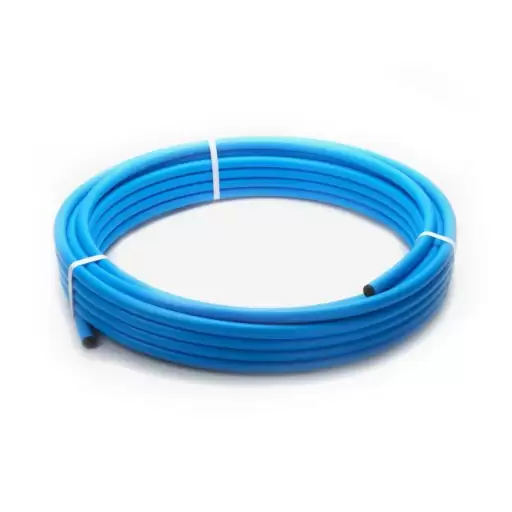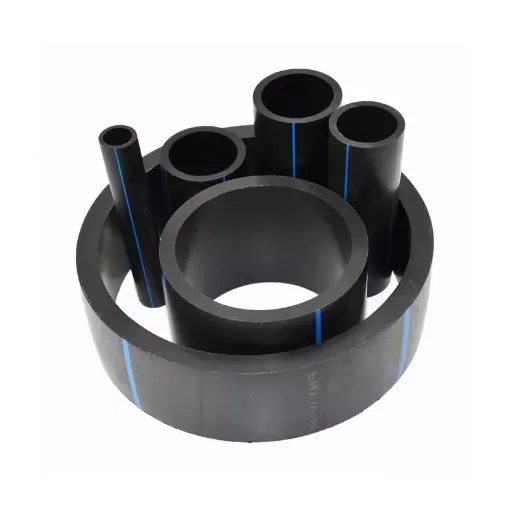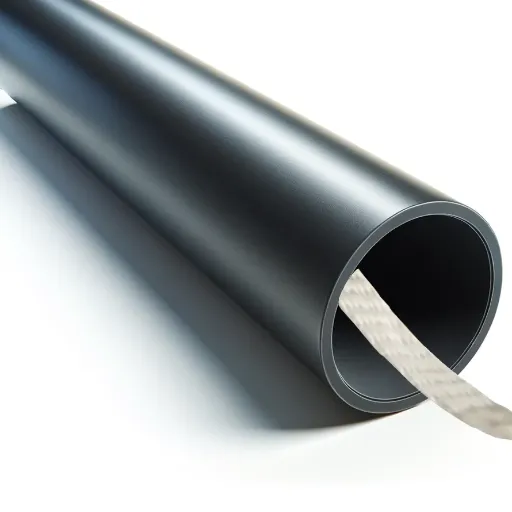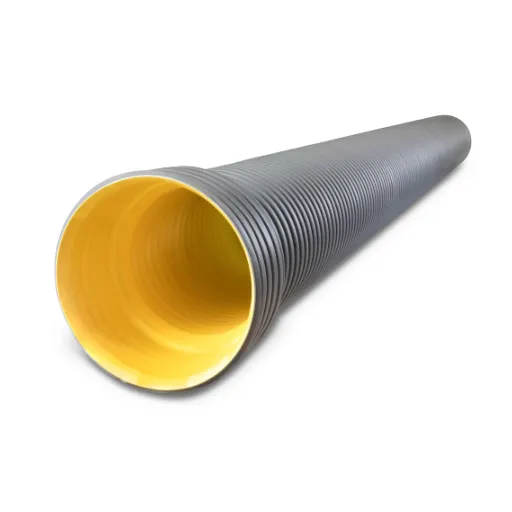Water supply infrastructure is the backbone of any thriving community, and selecting the right materials for these systems is critical to their efficiency, durability, and safety. Among the many options available, blue HDPE (High-Density Polyethylene) pipes have emerged as a preferred choice for water supply applications. But what makes these pipes so effective, and why are they so widely used in both residential and industrial contexts? This guide dives deep into the world of blue HDPE pipes, exploring their unique properties, advantages, and diverse applications. Whether you’re a contractor, engineer, or homeowner seeking reliable water supply solutions, this comprehensive resource will equip you with the knowledge needed to make informed decisions about your piping infrastructure. Keep reading to discover how blue HDPE pipes can address your water supply needs with unmatched performance and cost-efficiency.
Why Choose Blue HDPE Pipe for Your Projects?
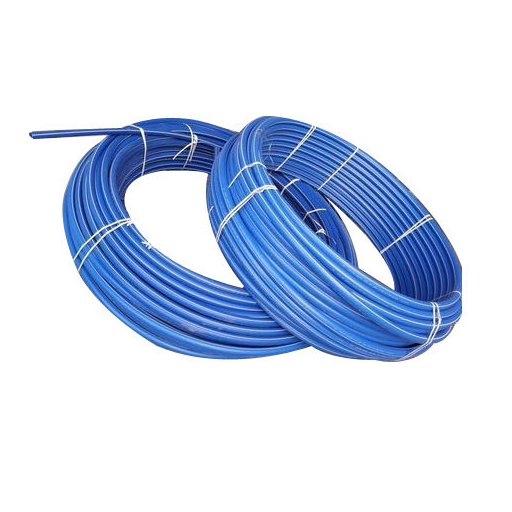
What Makes HDPE Pipe Ideal for Water Applications?
The water handling processes can benefit greatly from the use of HDPE (High-Density Polyethylene). This is due to its flexibility, strength, endurance, and protective features against corrosion. Unlike traditional metal or concrete materials, HDPE pipes will never rust, rot, or decompose due to Moisture and harsh environmental conditions, guaranteeing long-term reliability while decreasing maintenance expenses.
Additionally, HDPE pipes are very effective in helping with diverse temperatures and pressures. Higher tensile strength is exhibited by these pipes, making them easier to endure hydraulic demands that are often required in water distribution systems. Combined with the characteristics of flexibility, HDPE allows effortless installation even in rough terrains, significantly minimizing the chances of leaks or failure of joints. The low coefficient of friction also ensures smooth water flow, boosting efficiency.
Last but not least, HDPE pipes are cost-effective and environmentally friendly. The long life span reduces lifecycle costs while the lower weight aids in easier transportation and installation, thus reducing expenses. Its recyclability also aligns with modern sustainability goals, making it a top choice for many industries dealing with water supply projects.
Understanding the Color Coding of Pipes
In terms of safety, proper maintenance, and management of an entire system, the assignments as well as the content within various pipes can be color-coded. This method ensures safety across industries. Every geographic region and every country has management standards that regulate the categorization of pipe colors and their identification requirements.
Water hoses and water pipes are green and blue, respectively; fighting circles are red, flammable gases are assigned yellow, and dangerous substances are orange. Other colors tend to represent other nonhazardous materials. Each color denomination has been set up to reduce incidents of system breakdown, leaks, and other errors. This is especially useful during emergencies.
There is no doubt that these standards have their value in commercial, industrial, and external settings. Their maintenance enables easier communication with engineers and maintenance. Following these guidelines can promote effectiveness in operations and reduce danger while protecting the personnel and the infrastructure from being dealt with incorrectly. Regular audits combined with training sessions that focus on these essential improvements should be done frequently.
Key Benefits of Using Blue HDPE Pipe in Water Supply
Blue High-Density Polyethylene (HDPE) pipes are recognized to deliver superb durability and long life in water supply systems. Their corrosion, scaling, and chemical reaction resistance are among the many primary advantages. Unlike conventional metal pipes, HDPE pipes also do not rust or suffer from water and aggressive soil conditions, which further enhances their reliability for long-term water distribution.
Another key advantage to metal pipes is the ease of installation due to flexibility and light weight, which translates to lower labor costs. The pliancy of the pipes also minimizes joint failure risk under pressure and seismic activity, making the water supply secure. Moreover, the ability to fuse pipes with heat creates strong leak-free connections, which improves system efficiency.
Most importantly, the fact that the pipes are made of recyclable materials emits less carbon, making the HDPE pipes eco-friendly. Their smooth walls also reduce friction losses, which makes water delivery more efficient while lowering energy consumption. These features combined make blue HDPE pipes the best option for modern sustainable water supply infrastructure.
What Are the Different SDR Ratings for Blue HDPE Pipes?
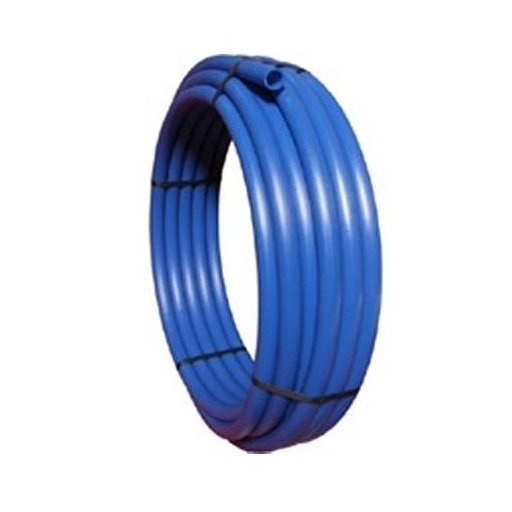
Explaining the Concept of SDR in HDPE Pipes
The Standard Dimension Ratio (SDR) is one of the most important features in the construction and specification of HDPE (high-density polyethylene) pipes. SDR is expressed as the outer diameter of the pipe divided by the wall thickness (SDR = Outer Diameter/ Wall Thickness). This SDR figure is of great value because it indicates the Maximum allowable working pressure (MAWP) and the limits of the structure’s integrity under different operating conditions. A pipe with a lower SDR value will denote a thicker wall compared to its diameter, which enhances durability and pressure resistance further. In opposition, a greater SDR value with thinner walls will indicate suitability for low-pressure applications.
To cover the myriad of necessities, SDR ratings spanning from 11 to 26 are placed for use in water supply, gas transport, and industrial piping systems. For example, SDR 11 pipes with greater wall thickness can operate at higher levels of pressure, which is typically meant for more grueling municipal water systems. On the other hand, higher SDR 17 pipes are designed for moderate pressure requirements, considering the material expenditure and reliability. Optimal choice of SDR must take into account application type, fluid properties, and the range of operating pressure alongside surrounding conditions.
The improvements made in the manufacturing of HDPE pipes enable the exact control of SDR standards. Observance of internal standards such as ISO 4427, ASTM D3035, and AWWA C906 is maintained. Moreover, modern HDPE pipes are subjected to stringent tests to confirm their SDR Classification, which includes Hydrostatic pressure performance tests and long-term creep tests. These specifications are essential for engineers so that the design of the pipeline integrates with operational requirements in a way that is safe and economical.
How to Select the Right SDR for Your Water Supply Needs
Choosing the correct Standard Dimension Ratio (SDR) for your water supply system marks an essential choice for the lifecycle and performance of the entire pipeline network. An SDR value is determined by the ratio of the pipe’s wall thickness to its diameter, impacting its resistance to internal pressure. Pipes designed for high internal pressures, suitable for mainline water distribution, have lower SDR values because these thinner-walled pipes are susceptible to high internal pressures. Thinner walls, associated with higher SDR values, are acceptable for low-pressure or gravitational flow applications, minimizing material usage.
Primary factors influencing other criteria for selection include the fluid’s nature, operating pressure, environmental factors, and temperature. For example, a continuously flowing high-pressure water system requires pipes with SDR greater than the maximum operating pressure divided by the material’s hydrostatic design basis (HDB), which creates an additional margin of safety. Other important considerations, such as soil classification, seismic likelihood, and ultraviolet radiation, may impact the overall lifecycle of the pipes and their structural integrity, but require additional scrutiny.
Today, virtually every tool of modern engineering and design software enables accurate simulations of actual working conditions to gauge compliance with ISO 4427 or AWWA C906. Such compliance enables the determination of the most efficient SDR, enhancing resource allocation during the planning stage. Strategic foresight circumvents the risks associated with pipe failure while optimizing resource consumption, enhancing overall financial and operational sustainability.
Impact of SDR on Pipe Performance and Pressure
A pipe’s Standard Dimension Ratio (SDR) impacts multiple performance and pressure factors under operational conditions. By studying how a material’s strength relates to wall thickness and internal pressure limits, an engineer can accurately predict the behavior of a pipe as well as reliability across multiple applications. The following is a summary of how performance and pressure are impacted by SDR value:
- Pressure Ratings (PN): A thicker pipe wall corresponds with a lower SDR value, which suggests a higher pressure rating (PN). For instance, an SDR 11 pipe is better suited to withstand pressure than an SDR 17 pipe and therefore suitable for high-pressure applications.
- Structural Strength and Durability: Increased resistance to external mechanical stresses, such as soil load or impact, is seen in pipes with lower SDR values. This leads to enhanced structural integrity, making these pipes ideal for heavy-duty infrastructure and underground installations.
- Flow Capacity (Hydraulic Performance): It is easier for pipes with higher SDR values to maintain higher flow capacity due to thinner walls increasing internal diameter; however, engineers must take into consideration the higher pressure the system may require.
- Material Usage and Cost Efficiency: SDR means the Standard Dimension Ratio. Pipes with higher SDR values require less material for production, which subsequently means lower costs. However, thinner walls may lead to reduced pressure tolerances and reduced longevity under extreme conditions.
- Thermal and Environmental Performance: The response of a pipe to temperature changes, UV exposure, and chemicals depends on the SDR. Pipes with lower SDRs have more thermal stability and resistance to harsher conditions.
Knowing these impacts helps guarantee that the correct SDR for a project is selected for the safety and overall expenditures. Engineers need to evaluate the specifics of the application in question in addition to the SDR values to enhance the efficiency of the entire system.
How Do Blue HDPE Pipes Compare to Other Pipe Materials?
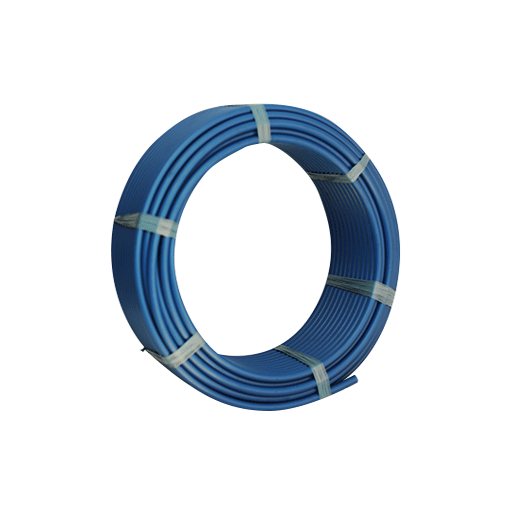
Comparing HDPE with Copper and Black Pipes
While black pipes are thick and heavy, making them better suited for conveying gas or liquid fuel, copper pipes are both pricey and prone to corrosion. However, they boast unrivaled durability, in contrast to HDPE pipes, which are incredibly flexible, light, and resistant to corrosion.
|
Feature |
HDPE |
Copper |
Black Pipe |
|---|---|---|---|
|
Price |
Low |
High |
Moderate |
|
Strength |
High |
High |
High |
|
Rust |
Resistant |
Prone |
Prone |
|
Bendability |
High |
Low |
Low |
|
Mass |
Light |
Moderate |
Heavy |
|
Application |
Water, Gas |
Water |
Gas, Fire |
|
Eco-Score |
Yes |
No |
No |
|
Longevity |
100+ years |
50+ years |
20-50 years |
Why High-Density Polyethylene is the Preferred Material
The applications of high-density polyethylene (HDPE) are numerous because of its polymer strength, flexibility, and affordability. The long-term endurance as well as the remarkable impact resistance of HDPE pipes under high pressure is unmatched. This enables transportation of water, gas, and industrial materials over vast distances without the concerns of ruptures or leaks. Furthermore, HDPE’s environmental and chemical resilience also possesses stressors like corrosive agents, making maintenance over its operational lifespan minimal.
Additionally, supporting HDPE is the low weight it possesses. Compared to traditional steel or copper, it makes transportation and installation much easier. With manifold fusion techniques joined by HDPE pipes, seamless connections are established, improving system integrity and decreasing the risk of joint failures. These benefits not only reduce the amount of time and money spent on labor but also improve overall installation time, leading to speedy infrastructure construction.
Last but not least, HDPE is an eco-friendly material. It is recyclable and has lower carbon emissions than many other pipe materials, making it more sustainable than many of its alternatives. Because of its durability, it doesn’t need to be replaced as often, which further reduces the waste of materials and resources. For these reasons, I strongly believe that HDPE is one of the best materials to use in piping systems for various industries.
Cost-Efficiency and Low Price Benefits
Recognized for cost-efficiency, HDPE (High-Density Polyethylene) pipes serve as a preferred choice across multiple industries. Their economic advantage stems from their long service life, exceeding 50 years under normal operating conditions. Unlike traditional piping materials like metal and concrete, they are cost-effective because of the minimized replacements needed over their life span.
Their long service life is also due to reduced manufacturing costs and less energy expended during production. The lightweight nature of the material allows for cheaper transportation and cost-effective installations. More flexible HDPE pipes can be easily and inexpensively handled by laborers during installation, reducing site labor costs. According to an industry case study, installation costs for HDPE are estimated to be lower by 30-40% as opposed to rigid piping systems due to reduced equipment and workforce necessities.
HDPE pipes also do not require costly protective coatings or regular maintenance due to being corrosion and chemically resistant. The characteristic enables long-term operational efficiency, supporting overall affordability alongside lower initial costs. These undeniable attributes underscore the reputation of HDPE as a financially feasible and sustainable solution within systems needing durable piping infrastructure.
What Are the Common Applications of Blue HDPE Pipe?
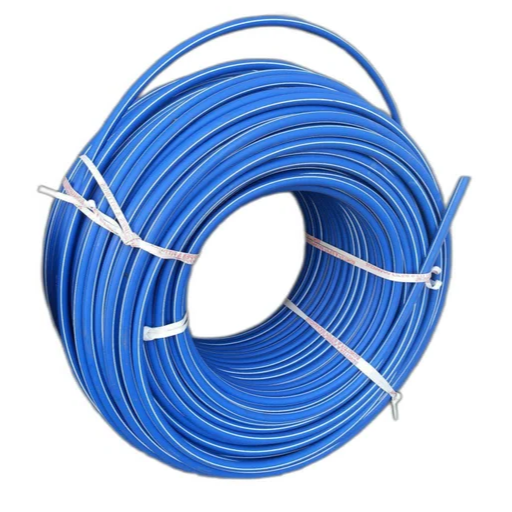
Understanding Underground and Home Use
Because of their great durability and adaptability, blue HDPE pipes are commonly used in both residential and underground applications. Their flexibility facilitates easy installation over uneven or shifting soils, which is a common problem in subterranean systems. Moreover, HDPE pipes are highly resistant to external loads and pressure, making them ideally suited for enduring the weight from surface activities and soil cover.
Due to their non-toxic nature and compliance with safety regulations, blue HDPE pipes are frequently used in potable water systems at domestic residences. They are also remarkably resistant to chemicals and microbial growth, guaranteeing a clean and uncontaminated water supply for long periods. Additionally, their ability to endure cyclic freezing and thawing without cracking is especially beneficial in colder regions.
Supporting the claims of increased adoption, some data has shown that the global market for HDPE pipes is expected to expand at an annual compound growth rate (CAGR) of about 4-5% in the next decade due to growing requirements for dependable plumbing and effective irrigation systems. This upward tendency reveals the importance of HDPE pipes in modern infrastructure systems, provided as a technically sophisticated solution for subdivisional and domestic applications with sustained operational strength over time.
Role in Drinking Water Use and Potable Water Systems
The use of high-density polyethylene (HDPE) pipes in drinking water and potable water systems is indispensable in modern society because of their strength, durability, chemical corrosion resistance, and non-permeable nature, which prevents leaching. The efficiency of these pipes optimally facilitates the transport of potable water while safeguarding against contamination. Below are five key advantages and roles fulfilled by HDPE pipes in potable water systems:
- Corrosion Resistance: Due to the non-corrosive nature of HDPE pipes, their use in potable water systems is favorable in regions with soils that are highly acidic or alkaline.
- Leak Prevention: The heat-fused joints of HDPE pipes create a unified pipeline system and a completely sealed pipeline, which reduces the chances of leakage, which is essential for prolonging the lifespan of the water supply.
- Flexibility and Impact Resistance: In comparison to other pipe materials, HDPE exhibits more flexibility, which enables it to sustain external impact as well as adjust to changing ground conditions without chipping or breaking, thus decreasing maintenance on drinking water systems.
- Longevity: These pipes are guaranteed to last around 50 to 100 years of operational life under normal conditions, which ensures their reliability in potable water applications while minimizing replacement frequency.
- Safety and Hygiene Compliance: The materials made up of HDPE comply with various international standards such as NSF/ANSI 61, which certifies that no harmful chemicals are leached into drinking water, thereby HDPE preserves human health and safety.
These factors confirm that the use of HDPE pipes in drinking water systems, and their growing use in the global water supply systems, is justified.
Other Applications, Like Gas and Sewage Systems
Applications of High-Density Polyethylene (HDPE) pipes are not limited to drinking water systems. Their flexibility, chemical resistance, environmental resistance, and durability make them extremely reliable for gas distribution and sewage management as well.
- Gas Distribution Systems: The use of HDPE pipes in gas pipelines is widespread, given their capacity to sustain significant pressures and resist corrosion. These pipes are capable of handling both natural and compressed gas efficiently, while the fusion welded joints ensure a leak-proof system in gas distribution networks, which is vital for safety in gas distribution networks. The global HDPE gas pipe market is rapidly growing due to increasing urbanization and the development of energy infrastructure. Moreover, their lightweight and flexibility make them extremely easy and affordable to install, even in difficult-to-reach areas.
- Sewage Systems and Waste Water Maintenance: Wastewater systems are greatly enhanced by the application of HDPE pipes. Their chemical resistance guarantees lower maintenance needs than concrete or cast iron, as they can withstand most chemicals present in wastewater. In addition, HDPE pipes can endure changes in soil position, which makes them ideal in places with high seismic activity. Also, modern trenchless pipe installation techniques pave the way for reduced ground disruption. Several studies have been conducted to prove that, because of low friction coefficients that result in less energy expenditure for fluid transportation, HDPE pipes have lower operational costs in wastewater systems.
These characteristics explain why HDPE pipes are so popular in sophisticated infrastructure projects, as they guarantee enduring loss of functionality and achieve substantial savings.
How to Ensure Blue HDPE Pipe Meets Standards and Codes?
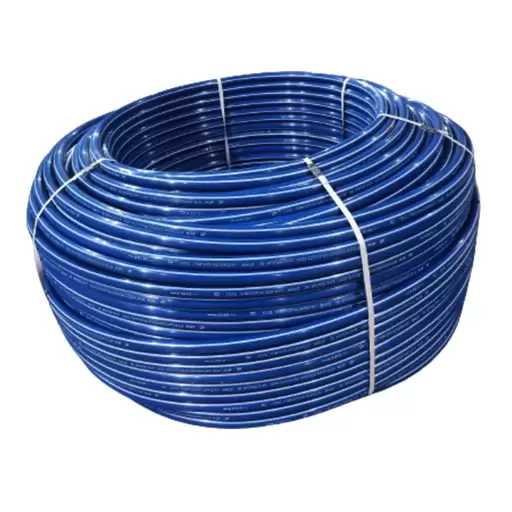
Overview of ASTM and National Standards
F714 and D3350 are two important standards and specifications about infrastructure systems that deal with the polyethylene pipe materials and dimensions, including the polyethylene (PE) pressure pipe, which has a controlled outside diameter and polyethylene (PE) pressure under the SDR-PR designation in F714. Within D3350, one of the material classification methods, which is also part of the standard named as SPECIFICATION FOR POLYETHYLENE (PE) PLASTICS 3350, contains properties suchs as density, melt index, tensile strength, and environmental stress-crack resistance.
The Widespread AWWA standards C901 and C906 also include international standards ISO 4427. Both add to the guidelines provided by ASTM by implementing further installation, environmental dependency, and pressure rating criteria. For instance, aside from other aspects, AWWA C906 also ensures adequate water distribution and transmission is followed through rigorous pressure testing as well as long-term hydrostatic strength assessment.
Following these standards is also maintained through the testing and certification processes. For instance, some testing companies issue certification for compliance with the Resin Designation Code and with other performance criteria of hydraulics. Following and fully complying with these standards also guarantees the uniformity and dependability of blue HDPE pipes in essential water and wastewater systems, reducing the chances of failure while increasing lifespan.
Checking Product Marking and Performance Criteria
The correct identification of blue HDPE pipes is critical for compliance with industry standards regarding compliance and traceability details. Markings should include the name of the manufacturer, product code, size, grade of material, and certifying marks. This information is important to validate the markings along the product and ensure that it gives a specified value and meets requirements like the Resin Designation Code audit, and also verifies if it meets the criteria defined by governing bodies. Also, traceability stamps regarding the date of production help in quality assurance to stakeholders, define the yield, and track in the event of recalls or defects.
On the contrary, any other criteria set aim for attention, focusing on blue HDPE pipes’ performance, like functionality and durability under normal working conditions. A pipe’s operational performance or stress for a prolonged time is evaluated through Hydrostatic pressure testing; this method is one of the core diagnostics for the above-stated conditions. Impact resistance is also evaluated to confirm the sustained operational stress due to the installation of pipes in harsh geographic conditions. Endurance to a great deal of harsh chemicals and differing temperatures is tested as well through thermal stability and oxidative resistance tests, which are also set by industry standards.
Along with precise marking and meticulous performance checks, these measures strengthen the blue HDPE pipe systems. They go beyond compliance requirements by enhancing safety, reducing maintenance costs, and increasing the lifespan of infrastructure. The incorporation of solid testing techniques alongside clear marking criteria improves water and wastewater management services, enabling effective and environmentally conscious service provision. As a result, the use of high-performance materials along with strict inspection guidelines remains foundational to plumbing and engineering ventures globally.
References
Frequently Asked Questions (FAQ)
Q: What is Blue HDPE Pipe, and how is it used in water supply systems?
A: Blue HDPE Pipe, often referred to as poly pipe, is a type of high-density polyethylene pipe used primarily for water supply solutions. It is favored for its durability and flexibility, making it ideal for a variety of applications, including as a conduit for potable water and drainage systems.
Q: How does Blue HDPE Pipe compare to other materials in terms of durability?
A: Blue HDPE Pipe is known for its strength and longevity. It is resistant to corrosion, abrasion, and impact, which makes it a reliable choice for long-term water supply solutions. The raw materials used in its production, often including virgin HDPE, contribute to its robust performance.
Q: Can Blue HDPE Pipe be used for hot water applications?
A: While Blue HDPE Pipe is primarily designed for cold water applications, some variations with specific inner linings and technology enhancements can support hot water use. It’s important to verify the temperature ratings with the manufacturer before using it for hot water systems.
Q: What are the advantages of using Blue HDPE Pipe over traditional piping materials?
A: Blue HDPE Pipe offers several advantages, including flexibility, lightweight properties, and ease of installation. It can be used in continuous lengths, reducing the number of joints and potential leak points, and is also resistant to environmental stress and chemical degradation.
Q: Is Blue HDPE Pipe suitable for use in electrical conduit applications?
A: Yes, Blue HDPE Pipe can be used in electrical conduit applications. Its durability and flexibility make it an excellent choice for housing electric wires and cables, providing protection and insulation.
Q: What does CTS mean about Blue HDPE Pipe?
A: CTS stands for Copper Tube Size, which is a standard used to describe the dimensions of Blue HDPE Pipe. It helps ensure compatibility with fittings and other components in a water supply system.
Q: Are there any specific installation guidelines for Blue HDPE Pipe?
A: Yes, installation guidelines typically include ensuring proper trench depth, avoiding sharp bends, and using correct fittings. It is important to follow the manufacturer’s instructions and industry standards to maintain the pipe’s function and performance.
Q: Can Blue HDPE Pipe be used for both above-ground and underground applications?
A: Yes, Blue HDPE Pipe is versatile and can be used for both above-ground and underground applications. Its resistance to UV radiation and environmental stress makes it suitable for outdoor use, while its durability ensures it performs well in buried installations.



